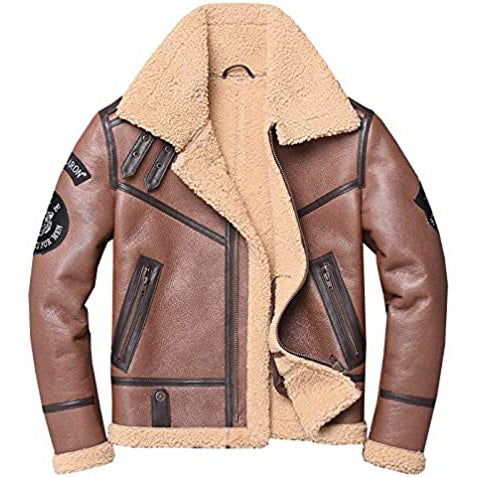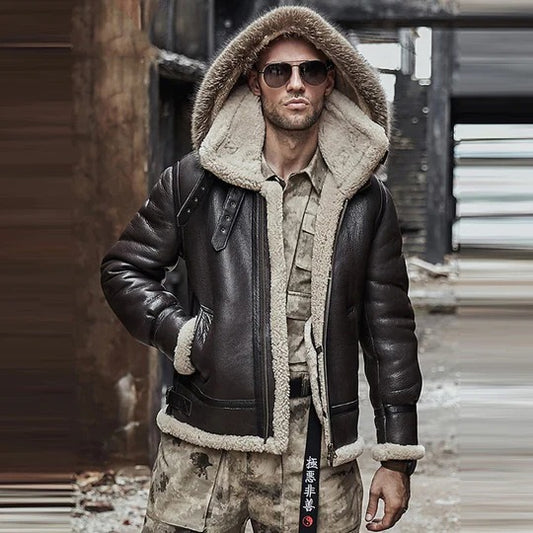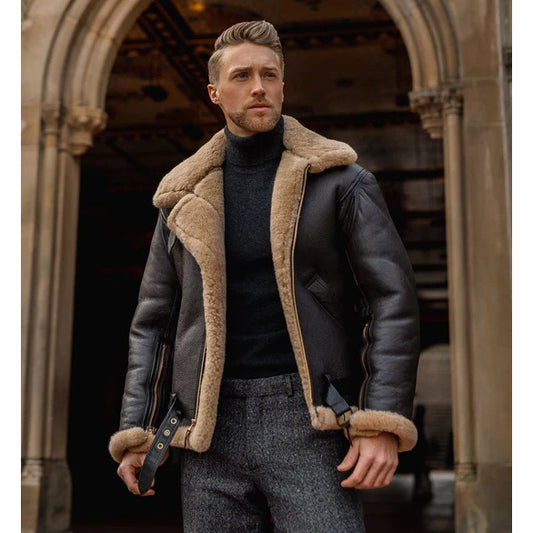Understanding the Difference Between Sheepskin and Shearling
Introduction
When it comes to luxurious and warm materials for outerwear, sheepskin and shearling are often mentioned. These terms are sometimes used interchangeably, but they actually refer to different materials. In this article, we will delve into the distinction between sheepskin and shearling, shedding light on their unique characteristics and uses.
Sheepskin: The Versatile and Natural Material
Sheepskin is the hide of a sheep with the wool intact. It is a natural material that has been used for centuries to create various products, including jackets, coats, boots, and accessories. Sheepskin is prized for its softness, insulation properties, and durability.
One of the key features of sheepskin is its dense and plush wool, which provides excellent insulation and warmth. The wool is naturally breathable, allowing air to circulate and regulate body temperature. Sheepskin also has moisture-wicking properties, helping to keep you dry and comfortable.
Sheepskin is known for its natural elasticity and flexibility, allowing it to conform to the shape of the wearer. It is also resistant to wrinkles, making it a low-maintenance material. Sheepskin jackets and coats are often associated with a classic and timeless style.
Shearling: The Cozy and Luxurious Material
Shearling, on the other hand, is a specific type of sheepskin that has been tanned and processed with the wool still attached. The term "shearling" refers to the sheepskin that has been shorn once, leaving a short, dense wool layer.
The process of making shearling involves carefully selecting sheepskins with uniform wool density and length. The sheepskin is then washed, dyed, and treated to preserve its natural qualities. The result is a material that combines the softness and warmth of the wool with the supple and smooth leather side of the sheepskin.
Shearling is highly regarded for its luxurious and cozy feel. The wool provides exceptional insulation, making shearling garments ideal for cold weather. It is also breathable, allowing moisture to escape while retaining warmth. Shearling jackets and coats are often seen as high-end and fashion-forward pieces.
Differences in Uses and Maintenance
The distinction between sheepskin and shearling also lies in their specific uses and maintenance requirements.
Sheepskin jackets and coats are versatile and can be worn in various settings. They are suitable for both casual and formal occasions, providing comfort and style. Sheepskin products require regular maintenance to keep the leather soft and supple. It is recommended to clean sheepskin with a specialized sheepskin cleaner and conditioner to preserve its quality.
Shearling jackets and coats, on the other hand, are considered more luxurious and fashion-focused. They are often seen as statement pieces and are commonly found in high-end fashion collections. Shearling requires delicate care to maintain its appearance and longevity. It is advised to avoid exposing shearling to excessive moisture and to seek professional cleaning when necessary.
Conclusion
In conclusion, sheepskin and shearling are both derived from sheep, but they differ in terms of processing and characteristics. Sheepskin refers to the entire hide with the wool intact, while shearling specifically refers to sheepskin that has been tanned and processed with the wool still attached. Sheepskin offers versatility, softness, and durability, while shearling provides a luxurious and cozy feel. Understanding the distinction between these materials can help you make informed choices when selecting outerwear that suits your needs and preferences.





